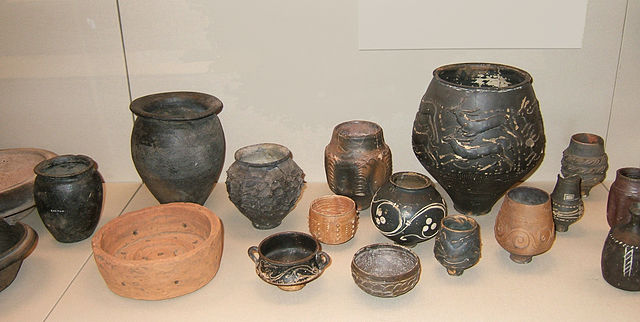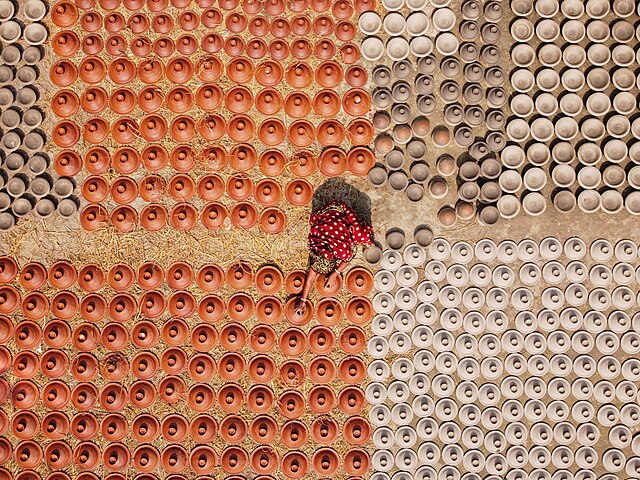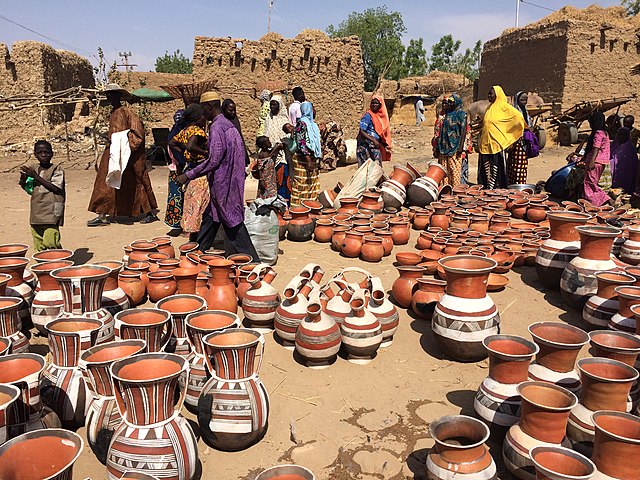Pottery was produced in enormous quantities in ancient Rome, mostly for utilitarian purposes. It is found all over the former Roman Empire and beyond. Monte Testaccio is a huge waste mound in Rome made almost entirely of broken amphorae used for transporting and storing liquids and other products – in this case probably mostly Spanish olive oil, which was landed nearby, and was the main fuel for lighting, as well as its use in the kitchen and washing in the baths.
Decorated terra sigillata bowl from Gaul (Metz in France)
Unusually ambitious Samian ware flask from Southern Gaul around 100 AD. Heracles is killing Laomedon.
A selection of pottery found in Roman Britain. The assemblage includes Black-burnished ware jars, a Rusticated Ware jar, a Central Gaulish Colour-Coated Ware beaker, Trier Black-slipped Ware with white trailed decoration, Nene Valley Colour Coated Ware, a coarse ware cheese press and other fine wares.
Red gloss terra sigillata ware with relief decoration. Compare the plain unglossed restored section to the left.
Pottery is the process and the products of forming vessels and other objects with clay and other raw materials, which are fired at high temperatures to give them a hard and durable form. The place where such wares are made by a potter is also called a pottery. The definition of pottery, used by the ASTM International, is "all fired ceramic wares that contain clay when formed, except technical, structural, and refractory products". End applications include tableware, decorative ware, sanitary ware, and in technology and industry such as electrical insulators and laboratory ware. In art history and archaeology, especially of ancient and prehistoric periods, pottery often means vessels only, and sculpted figurines of the same material are called terracottas.
Hand building a jar.
Finished pottery products kept for drying in the sun.
An 18th-century Chinese export porcelain service, for the America market
The pottery market in Boubon, Niger.








